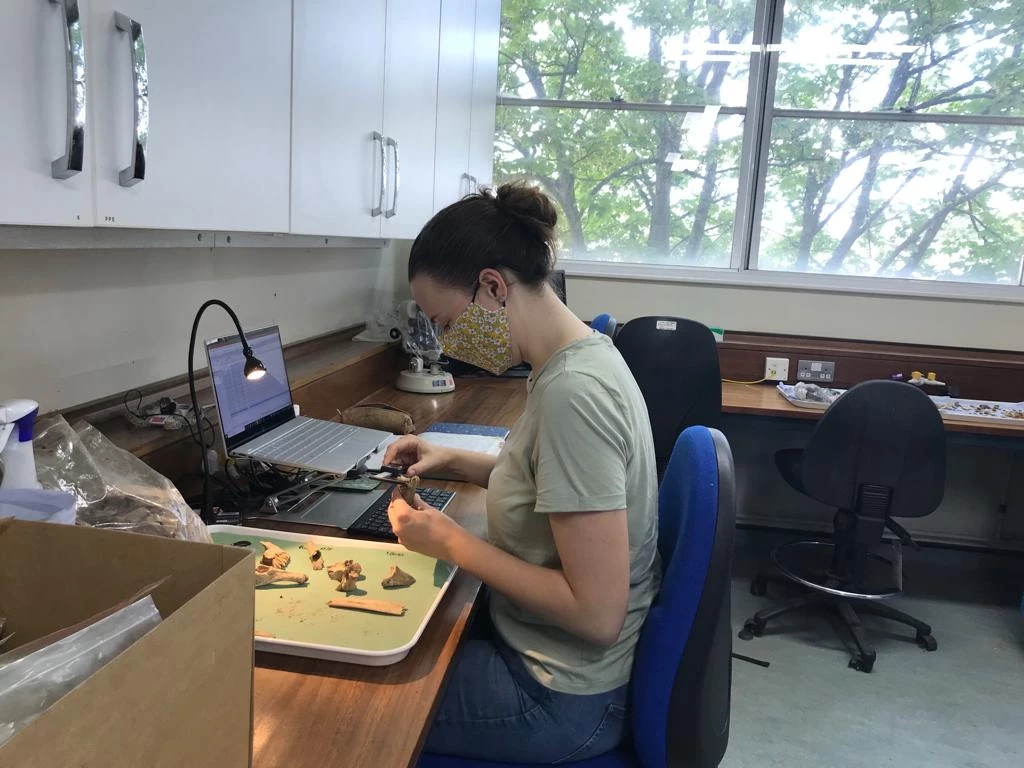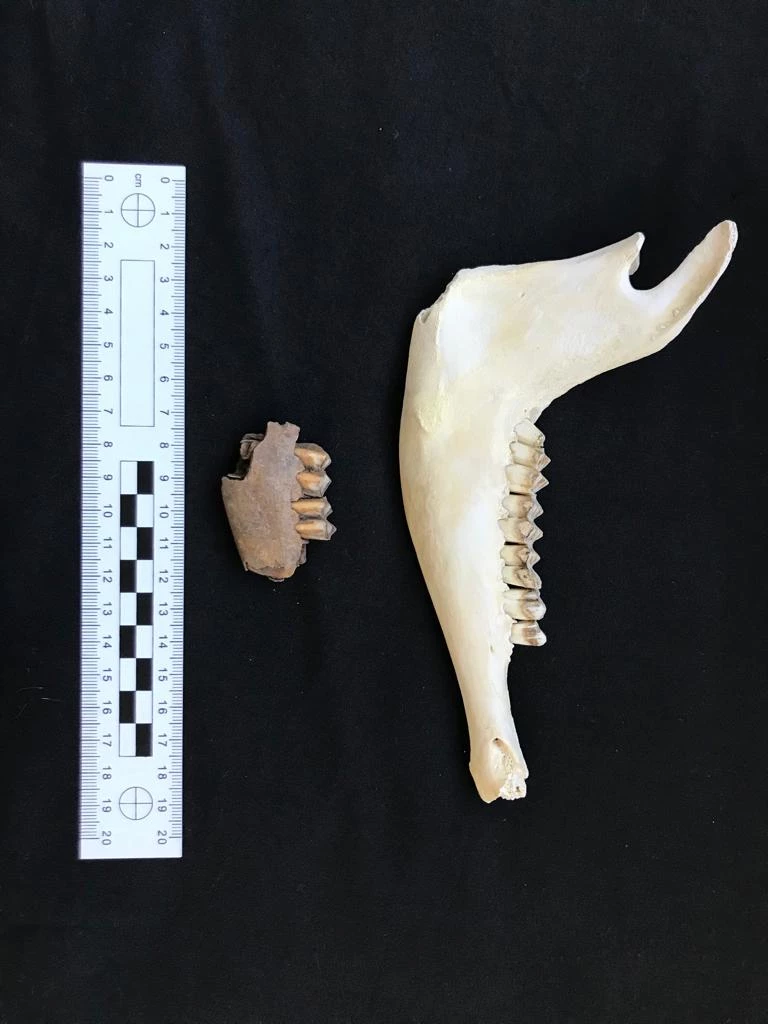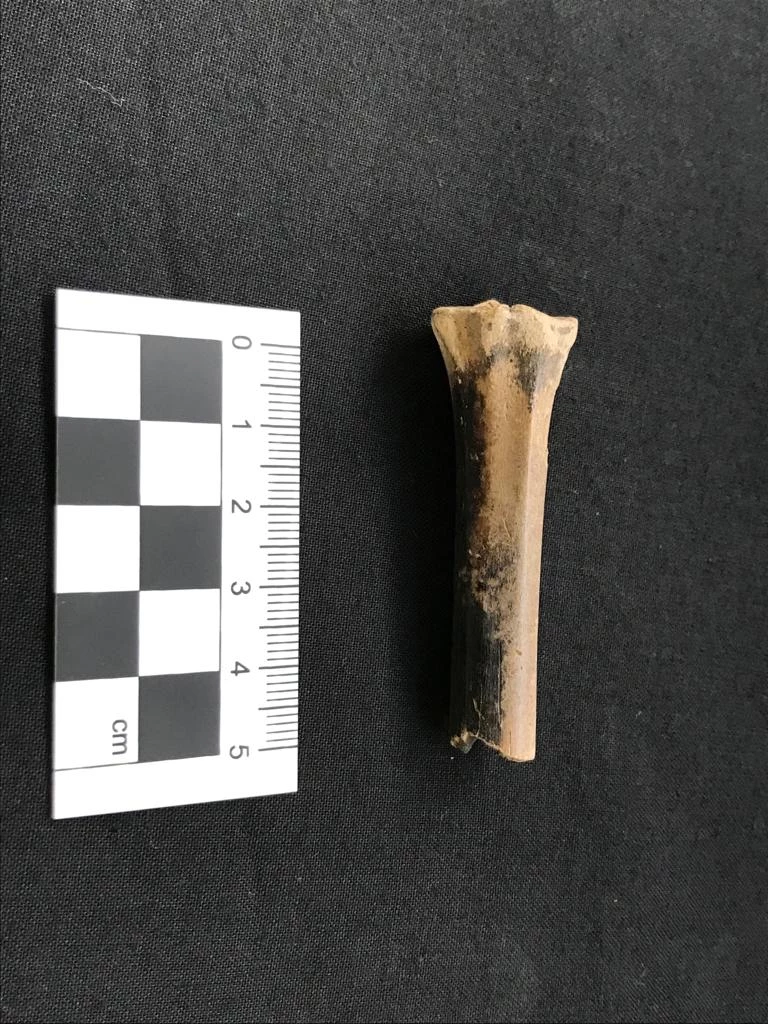Sheep Farming In The Past
, 22 Mawrth 2022
What is my project about?
Hello! I’m Meredith, a PhD student working at Cardiff University and Amgueddfa Cymru. I am a zooarchaeologist, which means I study animal remains from archaeological sites to find out more about the relationship between humans and animals in the past. So, Lambcam seemed like a great opportunity to share a little bit about my project, and how we can learn about sheep farming in the past!
For my project, I am studying the animal bones from the site of Llanbedrgoch on Anglesey. This was an early medieval settlement, occupied from the 5th to 11th centuries AD. Archaeologists recovered over 50,000 pieces of animal bone from Llanbedrgoch, which will provide a really valuable insight into farming practices and diet at this time. You can read about my research in a little more detail here.
Volunteers washing animal remains from Llanbedrgoch. ©Amgueddfa Cymru-National Museum of Wales.
I am currently recording all the bones into a database and trying to identify what animals they came from. This can be tricky, particularly when the bones are very broken. Sheep bones can also be an extra challenge to identify as they look extremely similar to goat bones!
Recording animal bones in the bioarchaeology laboratory at Cardiff University. (Photo: Meredith Hood)
How can we find about sheep farming in the past?
Sheep remains can tell us lots of information about how sheep were farmed and used in the past. For example, we can estimate the age at which a sheep died by looking at how worn their teeth are, or whether their bones have fused. Sheep that were kept for a long time as adults may have been used for their wool or milk.
A modern sheep mandible/jawbone (top) compared to an early medieval fragment of a sheep jawbone from Llanbedrgoch, Anglesey (bottom) (Photo: Meredith Hood)
Two sheep humeri (upper arm) bones. The bone on the left is from a juvenile, and the bone on the right is from an adult. (Photo: Meredith Hood)
We can also look for things such as butchery or burning marks on bones which might tell us that lamb or mutton was eaten. Certain body parts, like the pelvis, can tell us the sex of the sheep, which can suggest whether breeding might have taken place on a site.
Part of a sheep metatarsal showing black burning marks. (Photo: Meredith Hood)
What do we know about sheep farming in early medieval Wales?
Unfortunately, animal bones from early medieval Wales haven’t survived very well in the soil. But from archaeological sites where they have survived, it appears that sheep were predominantly being kept for their secondary products like wool and milk.
Historical texts can also give us some clues. Law texts surviving from the 13th century which have been attributed to Hywel Dda (a 10th century king) describe, for example, how much sheep were worth (‘One Penny is the worth of a lamb whilst it shall be sucking’1) and that ‘fat’ sheep should be given to the king as render payments.
The large number of bones from Llanbedrgoch is really exciting and should provide us with more information about early medieval Welsh sheep farming, so watch this space!
Illustration of sheep from the Laws of Hywel Dda, mid-thirteenth century. From: Peniarth MS 28 f. 25 v. (Image: Llyfrgell Genedlaethol Cymru – The National Library of Wales, Public Domain)
[1] Owen, A. (1841). Ancient Laws and Institutes of Wales. London, p.715







sylw - (1)